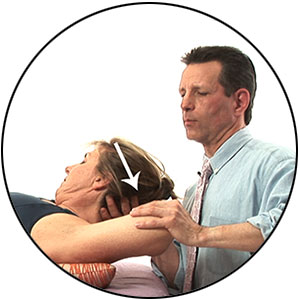
This class features over 5 hours of video footage. Expertly produced with lots of extra graphics and 3-d models to make learning easy. This class also includes access to our 3d anatomy viewer which allows you to rotate the body and view 120 muscles and 100 bones with detailed info on each.
Muscle Energy Technique is one of the most effective and gentle manual techniques for the correction of somatic dysfunction. MET uses accurate assessment techniques to discover if a joint is stuck out of alignment. Then the practitioner positions the patient and asks for gentle resistance in such a way that the joint is brought back into alignment, and the tight muscle relaxed. This technique can be incorporated easily into any treatment protocol, and is an excellent addition to any practice.
This course includes all the footage from both our dvds. So you will learn techniques for the neck, general shoulder techniques, and specific treatments for the thoracic vertebrae and the ribs, pelvis, sacrum and lumbar spine. This includes techniques for balancing the occiput on the atlas, the atlas on the axis, and other techniques for the rest of the cervical vertebrae. Also, Tom shows techniques to assess and re-align each thoracic vertebrae, and how to correct rib dysfunctions such as ribs that are stuck in inhalation, exhilation, and compressed ribs. On the muscular side, this online class shows many releases for the neck/shoulder region that can be done before the joints are addressed. This class also includes corrections for a pelvis upslip, downslip, rotations, inflair and outflair and pubic bone dysfunctions. It also covers Sacral rotations, and unilateral flexion/extension dysfunctions. The lumbar section covers one or multiple vertebrae stuck in flexion or extensions. In addition to all this, there is also a section on using muscle energy to balance and relax all the muscles surrounding the hips. If you want to know how to assess each part of the body and then perform gentle techniques to correct the dysfunction, this online class is for you!
Tom Ockler P.T. has extensive MET teaching experience throughout the United States, Canada, England and Australia.
Lessons
Introduction
Free Preview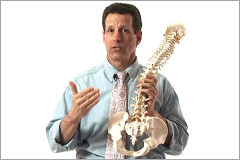
This lesson is the introduction to Muscle energy technique. In this lesson Tom describes the anatomical basis for MET, including muscle spindle cell, joint mechanics and muscle function. Tom also describes the difference between MET to release a muscle, and MET to release a joint (both of which are covered in this class). Finally Tom discusses how much pressure to use, and contraindications for the work.
Anatomy Viewer for MET
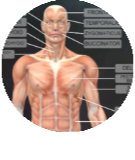
As part of this course, you have access to our 3d anatomy viewer. Click a label to view a muscle. Click anywhere else to rotate the model. Click/hold and drag right or left to control rotation. There are 5 stops where the labels are clickable. The bottom right graphic shows you where you are. Search […]
Pelvis- muscular
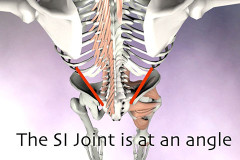
This lesson demonstrates how to release all the muscles that surround and support the pelvis. This includes the gluteus medius and minimus, obturators, gemelli, quadratus femoris, tensor fascia latae, rectus femoris, adductors, psoas and iliacus and more. Using muscle energy technique to release the muscles is incredible efficient and effective.
Pelvis- articular
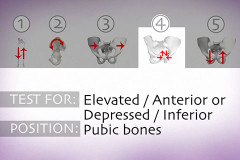
This lesson shows the anatomy and movement of the ilium, ischium and pubic bones (as the pelvis). Tom shows a full evaluation for each bone, including ilium upslip, downslide, inflair, outflair, and rotation, and inferior or superior pubis. For each assessment, he shows how to bring the structure into balance, as well as the proper treatment order.
Sacrum
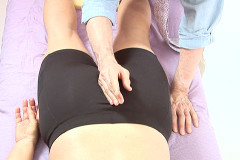
This lesson shows how to evaluate the sacrum in terms of flexion, extension and rotation. The axis of rotation is discussed, and the biomechanics of the SI joint. Then Tom demonstrates techniques to align the sacrum.
Thoracic
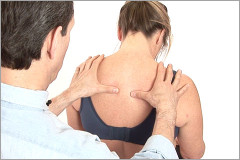
This lesson shows the movement of the thoracic vertebrae and how to perform evaluation in the seated and laying position. This evaluation uses motion to discover if the vertebrae is stuck in flexion or extension on the right or left. Then he demonstrates techniques to free the restriction and get the vertebrae functioning properly.
Lumbar
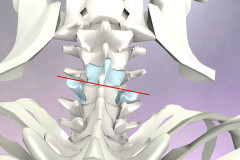
This lesson discusses the anatomy and movement patterns of the lumbar spine. Tom shows how to evaluate each lumbar vertebrae and determine if it is stuck in flexion or extension on the right or left. Then he demonstrates how to return the vertebrae to proper movement using muscle energy techniques.
Cervical and Shoulder
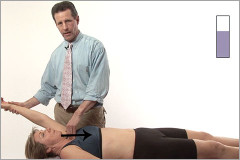
In this lesson Tom shows both muscle MET and articular MET. First he shows how to release all the muscles in the cervical area and shoulder, including the pectoralis major, lattisimus dorsi, trapezius, levator scapula and others. He then shows how to evaluate the sterno-clavicular joint for dysfunction, then the gleno-humeral joint itself. Finally he shows to evaluate the cervical vertebrae for dysfunction, and demonstrates how to get the vertebrae moving properly.
Rib Cage
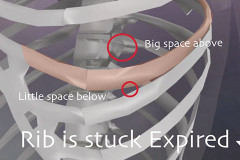
This this lesson Tom demonstrates how to evaluate the rib cage. This includes evaluation for inflair, bucket handle, and pump handle motion. Once the general evaluation is complete, he shows to to assess each rib to determine if the rib is stuck in inspiration or expiration. Once this is determined, he shows how to release the rib to restore proper function.
Breathing
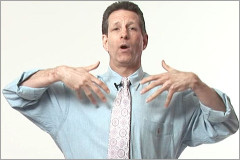
In this short lesson, Tom talks specifically about belly breathing as opposed to correct functional breathing that uses the rib cage and keeps the ribs healthy and moving.



Follow Us!